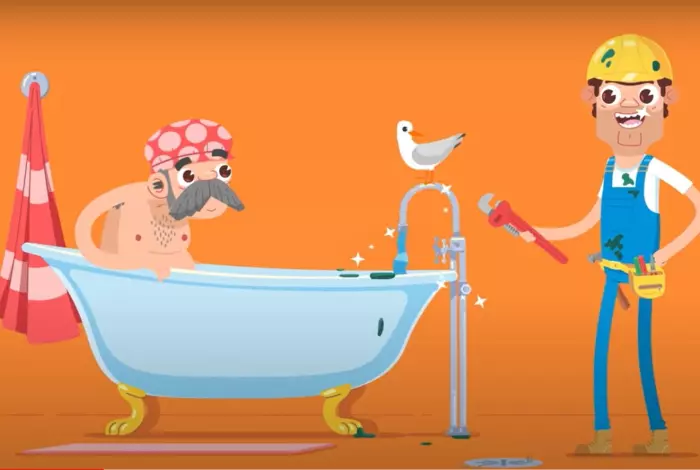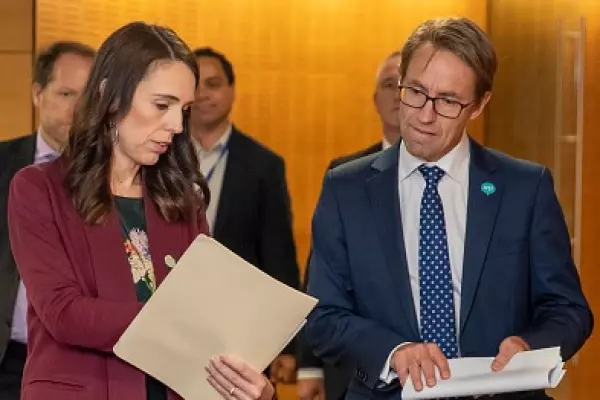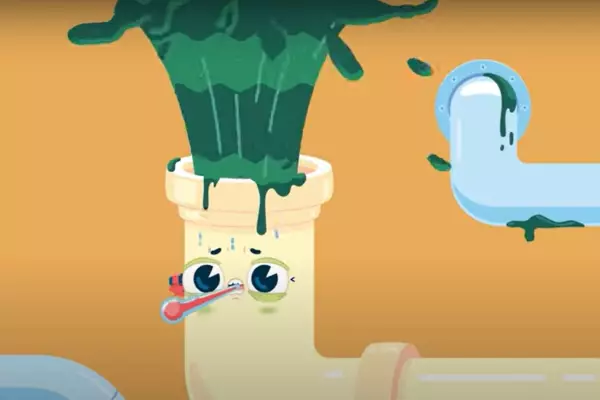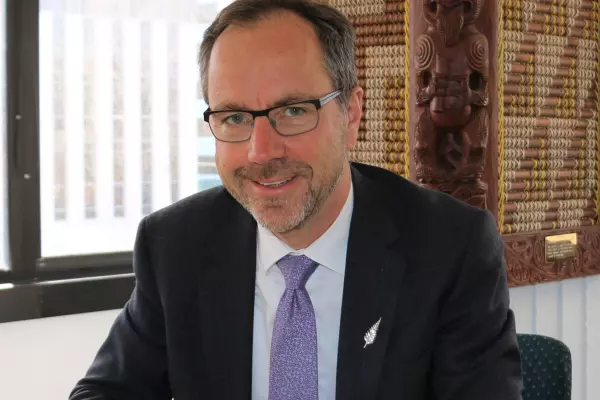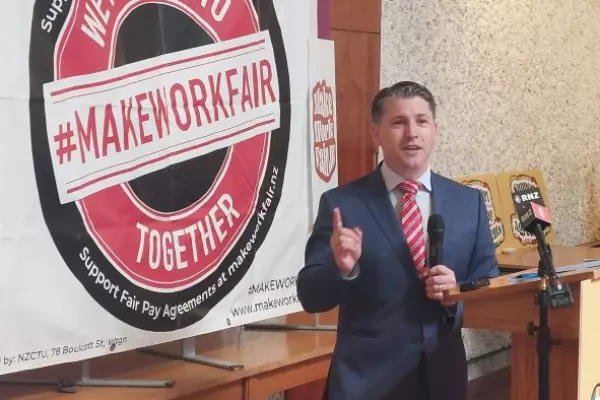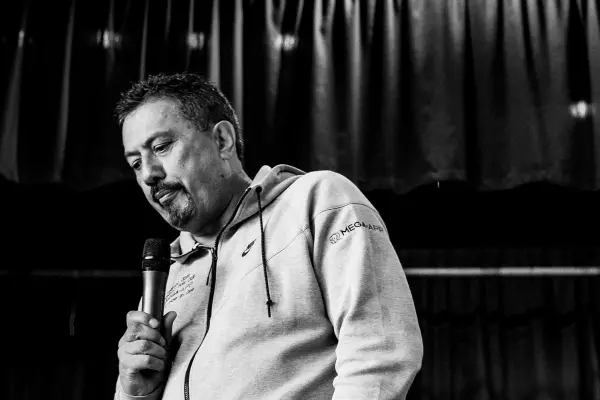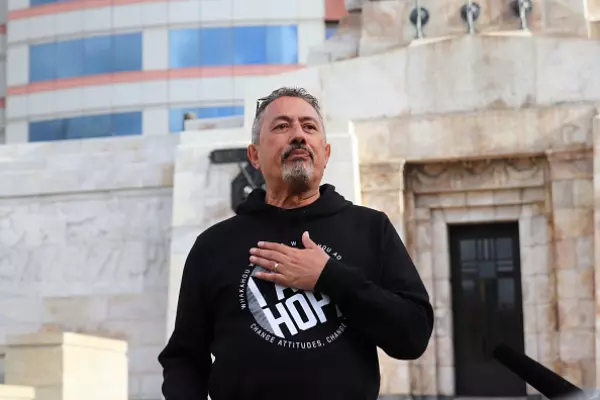The Three Waters television ad campaign that used taxpayers’ money to influence the opinions of ratepayers was cut short after intervention by the Public Service Commission, BusinessDesk has learned.
When the first of the adverts was aired around the middle of the year, the commission “raised concerns” with the sponsoring Department of Internal Affairs (DIA) on “how the government advertising guidelines had been considered”, the commission said in a statement.
The guidelines require publicly funded campaigns to be accurate, factual and unbiased, but the cartoon-style adverts are notable for their lack of factual information.
They portray a dystopian future in which taps run dry or are full of sludge. As if by magic, a smiling cartoon plumber – presumably the alter ego of a post-reform three waters agency – fixes problematic pipes with a single tap of his spanner. (Transcripts of the adverts can be found at the end of this article.)
The commission said the DIA three waters unit made some changes to the second ad in the series after concern was expressed.
Unlike the fact-free first advert, the follow-up ad contains some real information: in five of its 30 seconds it shows a map of New Zealand with the boundaries of the proposed new water agencies, adding that “we’re grouping it [water infrastructure] together”.
The commission said a third intended advert was axed after it advised the three waters unit of “significant risks” that it “could be viewed as straying into advocating government policy rather than explaining policy”.
To meet the guidelines, first published in 1989, taxpayer-funded campaigns must:
- be accurate, factual, truthful, fair, honest, and impartial.
- use unbiased and objective language that is free from partisan promotion of government policy or political argument.
- be undertaken only where there is an identified and justifiable need for information.
The TV campaign flirted with the guidelines by presenting the policy choices as a black-and-white duality – filth and unhappiness versus the “plan” – with few facts and no clarity on why the ratepayers viewing the adverts needed to pay for them in their role as taxpayers.
The campaign also included print and online content that in some cases provided fuller information.
The TV ads were panned by many of the local government leaders whom the spots claimed the government was “working with” on the water reforms.
The campaign was expected to run until the end of 2021 at a cost of $3.5 million, but the three waters unit has yet to confirm this figure to BusinessDesk. It is possible that some of the campaign's budget was not spent once the third TV ad was canned.
“Mindful” and “confident” – but not in writing
The DIA's three waters unit is leading the government's plan to consolidate all council-owned drinking, storm and wastewater infrastructure under four regional bodies.
The unit said it was “mindful” of the government guidelines while developing the campaign, and currently “is comfortable” that the adverts complied. But it has no documentation of any assessment against the guidelines before it commissioned the campaign and then approved the actual ads.
While volunteering that “no documented assessment exists ... this assessment was carried out by appropriately experienced members of the Three Waters Reform Programme team.”
An advisory group overseeing the campaign included members with experience in marketing, advertising, public sector campaigning and communications in the private and public sectors.
None of these experts considered the guidelines thoroughly enough to formally assess and document the campaign’s compliance with them.
In more than seven pages of responses under the Official Information Act, the three waters unit did not mention the advice offered by the Public Service Commission.
Factual? Impartial and non-partisan?
In the absence of factual information, the two adverts that ran on TV promoted a frightening fantasy that the government then promised to prevent through its reforms.
Even the apparently factual claim that “we’ve got a plan” seemed premature, given that the campaign ran during the eight-week period in which the government was still consulting with councils on the reforms, presumably with an open mind.
The second ad continued to run after it was clear that widespread opposition in local government made the “working with councils” claim doubtful.
Meanwhile, in its lengthy OIA responses to BusinessDesk inquiries, the DIA unit did not address directly whether the campaign was “free from partisan promotion of government policy and political argument” – the heart of the commission’s concerns.
Why have a campaign at all?
Three Waters “do[es] not hold any specific documents” assessing the guidelines’ expectation that there be “an identified and justifiable need” for the campaign, its OIA response advised.
“[T]he government’s assessment of the need for the public information and education campaign is the sum of the Three Waters Reform Programme’s extensive research, policy analysis and engagement with councils, iwi/Māori representatives and water industry experts over the past four years,” it said.
On “a number of occasions”, the three waters steering committee “strongly advised that it should not be left to councils” to explain the reforms, “but this detail has not been recorded in the meeting summaries”, it said.
The need for the campaign was essentially political, judging by a briefing DIA prepared for local government minister Nanaia Mahuta, who is leading the reforms.
After noting there was poor understanding around NZ of the challenges facing the country’s water systems, the paper correctly predicted that “as the reform process gathers momentum and becomes ‘real’ for small councils in particular, mayors and senior executives may forcefully articulate questions about their councils’ continued viability and the future of local government”.
A campaign “directed at the public at large will facilitate a more conducive landing space for councils in their consultation with communities,” said the briefing, which was designed to be passed on to senior ministers.
“It would lessen the potential risks of opting out of the programme and provide greater levels of confidence in their continued voluntary participation and therefore the success of the reform programme itself.”
Who failed to inform the public?
The three waters unit’s “invitation to pitch”, given to ad agencies in April, expanded the brief to “the ultimate aim of helping New Zealanders engage with and participate in” the three waters decisions.
Yet in the end, the TV ads promoted the reforms without mentioning attempts by some councils to engage with their communities during the time the ads were airing. The government provided no public consultation mechanism of its own.
Mahuta told TVNZ in early September that “certain local leaders, with the benefit of all the information in front of them, have not given the full information to their residents and ratepayers in a way that they can make a balanced decision".
She made this criticism while public funds continued to be spent on the government’s own information-lite promotional campaign.
A tick from the Advertising Standards Authority
In October, the Advertising Standards Authority cleared the three waters adverts of breaching its rules. Five complainants had argued that the campaign was misleading, scaremongering propaganda.
The authority found no violation, saying that in the context of “advocacy advertising” it is not misleading to ask viewers merely to “imagine Aotearoa without good water”.
The advocacy standard would only be breached, the authority found, if the advert presented facts that could not be substantiated.
In that respect, the Three Waters Programme appears fortunate that its adverts were relatively fact-free.
Tomorrow: The mystery advisor, the secret advice and how Three Waters stops time
Do you know something we should know? Email BusinessDesk's public sector investigation team: [email protected].
First Three Waters advertisement – July 2021 | |
Script | Animation |
Imagine Aotearoa without good water. | Bubbles rise through blue water. |
What a stink-as place that would be. | A woman at the kitchen sink examines a glass of water. |
Trout would be grumpy … | A fish walks on land with a hobo’s kit over its shoulder (unwillingly transient). |
… boating no fun… | A downcast man fishes from a beached dingy. |
… the dirty ducks a sad sight to see. | A duck passes in front of the fisherman and splashes into a dirty/oily puddle. The splash coats the viewer’s screen. |
Mean-as manus wouldn’t be mean … | The screen clears to show a girl swimming near a waste-water outfall, covered in muck. She shakes the filth off herself. |
… showers a complete waste of time. Bathrooms would be just rooms; togs just undies … | A male figure is in the shower. Dribbles of slime emerge from the shower-head. The shower stall and the figure’s clothing disappear. He covers his private parts in embarrassment and tries to slink away. |
… and our awa all filthy with slime. | A sad frog pounds a “No swimming” sign into the sand. |
That’s why we’ve got a plan. | Fresh, clean water bursts from a system of pipes, one of which has a face with eyes that blink happily. |
So let’s make it better than fine. | The characters reappear, enjoying a beautiful, clean lake. A dragonfly flies across the foreground and blinks happily before being captured by the long tongue of a frog. The frog grins. |
Better water is better for everyone. |
BETTER WATER IS BETTER FOR EVERYONE. Logo: New Zealand Government |
2nd advertisement – September 2021 | |
Script | Animation |
Imagine Aotearoa without good water. | Black goo oozes from a disconnected pipe. A face on the pipe squints and looks sickly. Red liquid rises in a thermometer in the pipe’s “mouth”, showing that it is getting sicker. A lump travels up the pipe, and black goo bursts out like a fountain. |
That’d be rude as, eh? | We see a network of filthy pipes, then a man in a bathtub. Sludge is pouring into the bath and splashing on to the floor. |
That’s why we’re working with councils to make sure it doesn’t happen for real. | A smiling plumber in overalls and hard hat appears. With a single tap of the spanner, all of the goo disappears and the tap water is running clear. The plumber grins broadly and his teeth sparkle. The man gives a thumbs-up and slips into the bathwater. |
So now, instead of them having to shoulder this burden, we’re grouping it together… | A map of New Zealand with council boundaries is shown. The boundaries transform to match the regions of the four proposed water entities. A dragonfly with big, friendly eyes flits across the scene. |
… to keep everybody on the path to better all-round water. | A happy woman fills a water balloon from an outdoor tap. The balloon bursts and its water showers the viewer’s screen. |
So our trout will be happy… | An underwater scene includes a smiling rainbow trout. The fish releases a burst of crystal-clear bubbles from its mouth. |
… undies can still be togs … | The camera pans to a young man standing alongside a stream, a matau (fish-hook carving) around his neck. He nervously holds on to his underwear, then lets go. The underwear sparkles, and he smiles. |
… and best of all us Kiwis can keep drinking straight from the tap. | At the kitchen sink, a woman happily guzzles a cascade of fresh blue water pouring from the tap. |
How about that? | The characters reappear, enjoying a beautiful, clean lake. A dragonfly flies across the foreground and blinks happily before being captured by the long tongue of a frog. The frog grins. |
Better water is better for everyone. |
BETTER WATER IS BETTER FOR EVERYONE. Logo: New Zealand Government |
Transcripts: BusinessDesk


